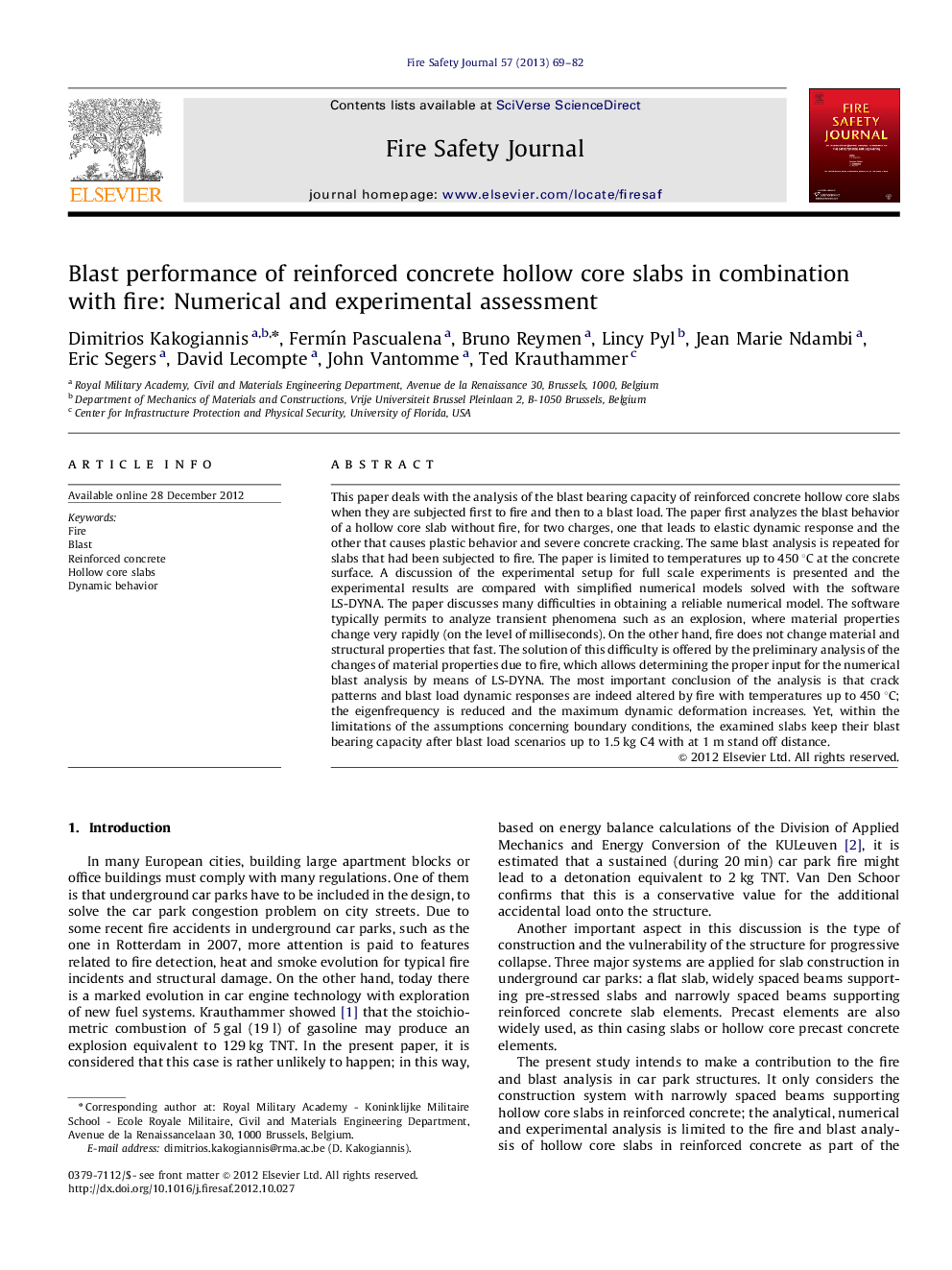| کد مقاله | کد نشریه | سال انتشار | مقاله انگلیسی | نسخه تمام متن |
|---|---|---|---|---|
| 269912 | 504714 | 2013 | 14 صفحه PDF | دانلود رایگان |

This paper deals with the analysis of the blast bearing capacity of reinforced concrete hollow core slabs when they are subjected first to fire and then to a blast load. The paper first analyzes the blast behavior of a hollow core slab without fire, for two charges, one that leads to elastic dynamic response and the other that causes plastic behavior and severe concrete cracking. The same blast analysis is repeated for slabs that had been subjected to fire. The paper is limited to temperatures up to 450 °C at the concrete surface. A discussion of the experimental setup for full scale experiments is presented and the experimental results are compared with simplified numerical models solved with the software LS-DYNA. The paper discusses many difficulties in obtaining a reliable numerical model. The software typically permits to analyze transient phenomena such as an explosion, where material properties change very rapidly (on the level of milliseconds). On the other hand, fire does not change material and structural properties that fast. The solution of this difficulty is offered by the preliminary analysis of the changes of material properties due to fire, which allows determining the proper input for the numerical blast analysis by means of LS-DYNA. The most important conclusion of the analysis is that crack patterns and blast load dynamic responses are indeed altered by fire with temperatures up to 450 °C; the eigenfrequency is reduced and the maximum dynamic deformation increases. Yet, within the limitations of the assumptions concerning boundary conditions, the examined slabs keep their blast bearing capacity after blast load scenarios up to 1.5 kg C4 with at 1 m stand off distance.
► This paper deals with the analysis of the response of concrete slabs subjected to fire and blast load.
► Experimental results are compared with numerical models solved with the software LS-DYNA.
► Crack patterns and blast load dynamic response are altered by fire with temperatures up to 450 °C.
► Blast load after fire generates longitudinal cracks that do not affect the blast load resistance.
► Numerical modeling can be expanded from a single element to simulate a full structure.
Journal: Fire Safety Journal - Volume 57, April 2013, Pages 69–82